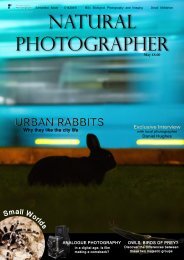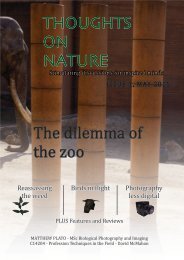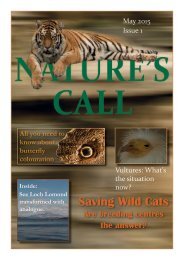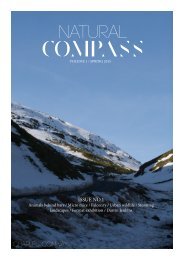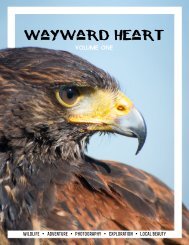TERRA
Create successful ePaper yourself
Turn your PDF publications into a flip-book with our unique Google optimized e-Paper software.
Wild animals needs large quantities of space in<br />
order to be healthy, so the ideal is that zoos<br />
provide as much space as they can to simulate<br />
their natural environment.However like said<br />
before even in large spaces of enclosure wild<br />
animals can develop this behavioural patterns,<br />
especially big mammals that in the wild would<br />
normally have a range of movement of thousand<br />
of miles. Leopards for example, a solitaire big<br />
cat known for moving thousands of miles they,<br />
can’t be in a small enclosures and even worst<br />
with another leopard.<br />
Like said before there are few zoos that try to<br />
provide a habitat as similar possible to the animal’s<br />
natural habitat, and provide for its behavioural<br />
and psychological needs. But even this good quality<br />
zoos and all of the effort to provide a natural<br />
environment, if the animals are not in their natural<br />
habitats is obvious they will not be capable<br />
of performing their natural behaviours. Most wild<br />
animals kept in captivity, even in big zoos, develop<br />
certain behavioural patterns that indicate their<br />
needs are not being met and their stress. These<br />
behaviours include pacing, bar-biting, circling, repetitive<br />
head-swaying, aggression, Coprophagia<br />
(Consuming and playing with excrement), excessive<br />
grooming, vomiting, frequent licking and<br />
self-mutilation.<br />
These are known as abnormal repetitive behaviour<br />
(ARB), and can vary depending on the animal<br />
and the circumstances, some can be seen as laid<br />
back and relaxed, like the pacing, and others can<br />
be really frantic, like twirl repeatedly or non stop<br />
biting. These neurotic and atypical behaviors occur<br />
as a result of boredom, depression, frustration, a<br />
lack of mental and physical enrichment, and removal<br />
from their natural habitat and social structures<br />
because in captivity, wild animals face challenges<br />
for which they’re not prepare, many things<br />
can be different even if the simulation of habitat is<br />
good, zoos normally keep wild animals from many<br />
parts of the world. So the climate, diet and the<br />
size and characteristics of the enclosure may be<br />
completely alien to the species as it exists in the<br />
wild. Furthermore animals are no longer able to<br />
have complete control over their environment because<br />
they no longer rely on themselves in order<br />
to obtain food or other physiological needs, but<br />
they rely on humans.<br />
As our knowledge is constantly increasing we now<br />
understand many things about animal behaviour it<br />
is important to address this knowledge into make<br />
people understand that keeping animals in captivity<br />
can, and does, cause immense mental suffering<br />
to the species. Sure people can argue about<br />
the importance of zoos to educate people about<br />
all of the different species of animals out there<br />
in the world. But even the best zoos can’t house<br />
an animal maximizing the they will have their own<br />
species behaviour and at the same time minimizing<br />
their stress and induced behaviours, because like<br />
it or not a setup environment will always be different<br />
from the habitat in which animals evolved.<br />
16 17





